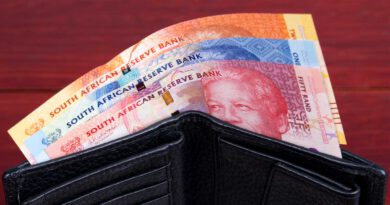Cell C recap plan announced – all the details
Blue Label Telecoms on Tuesday unveiled long-awaited details of a planned recapitalisation of Cell C — a move aimed at dealing once and for all with the mobile operator’s crippling debt problem.
The recap, which has been years in the making, is designed to put Cell C on an even keel, able to compete more effectively in the mobile services market against rivals Vodacom, MTN, Telkom and Rain without being constrained by a highly geared balance sheet.
Blue Label, which bought 45% of Cell C five years ago for R5.5-billion, was later forced to write down the carrying value of its investment to zero. Investors have punished Blue Label as a result, with its share price trading well off its peak above R20/share. (Read: Investors lost trust in us, Blue Label co-founders admit.)
In summary, Blue Label on Tuesday announced:
On Cell C’s debt restructure
- Current secured lenders will accept a compromise of 20c for every R1 of debt;
- Certain secured lenders have indicated they wish to remain invested in Cell C. They will be entitled to loan an amount equal to the 20c received under a new loan arrangement;
- All participating lenders in the new loan will be entitled to share pro rata in a fresh issue of ordinary shares in Cell C at a nominal value. All current shareholders will dilute proportionately to allow for this new issue of ordinary shares; and
- TPC, a Blue Label subsidiary, will hold about 49.3% of shares in Cell C after completion of the restructuring.
On Cell C’s liquidity
- TPC will purchase prepaid airtime to the value of R1.2-billion (including VAT) from Cell C;
- In addition, TPC will purchase four quarterly payments of airtime to the value of R300-million (including VAT);
- In conjunction with other third parties, TPC will purchase certain levels of stock from Cell C based on an agreed monthly schedule or in line with market requirements;
- TPC will raise R1.6-billion of the required funds from financial institutions, the settlement of which is to be repaid over a 24-month period in equal monthly instalments.
The umbrella term sheet is non-binding, except for standstill provisions and certain provisions of a general nature. The long-form agreements, which will be binding, are still being prepared.
The net result of the above, Blue Label said, will be that Cell C will be restructured and refinanced with the purpose of deleveraging its balance sheet, providing it with liquidity with which to operate and grow its businesses, and to position itself for long-term success.
“Cell C has implemented a turnaround strategy, focusing on operational efficiencies, reducing operational expenditure and optimising traffic. This includes a significant reduction in capital expenditure and a conversion of a fixed-cost, infrastructure-based network to a variable operational expenditure model,” Blue Label said.
‘Shareholder value’
“This, together with the recapitalisation of the current debt structure, will result in a significant improvement of its liquidity and ensure the long-term sustainability of the company. From a Blue Label perspective, the recapitalisation of Cell C, together with the benefits to be derived from Cell C’s turnaround strategy and its sustainability, will enhance the value of its investment therein and in turn restore its shareholder value.”
Cell C reported earnings before interest and tax for the six-month period ended 30 November 2021 of R862-million. After accounting for finance costs of R791-million and forex losses of R923-million, the net loss after tax amounted to R849-million, Blue Label said. “It should be noted that finance costs and forex losses will be reduced going forward as a result of the proposed transaction.”
In an e-mailed statement, Cell C CEO Douglas Craigie Stevenson said Tuesday’s announcement by Blue Label takes Cell C “closer to concluding a transaction to ensure that it is well placed to take advantage of strategic growth opportunities with the right capital structure”.

“Restructuring the balance sheet and improving Cell C’s overall liquidity was part of the four-pillar strategy we put in place to turn the company into a profitable, competitive player in the South African telecoms industry,” Craigie Stevenson said.
“The other two pillars include improving operational efficiencies and implementing an innovative network strategy. We have made significant strides on the latter two. Our leadership team has been focused on implementing a strategy to ensure the company is a fit-for-purpose entity when the transaction concludes.” — (c) 2022 NewsCentral Media
Source: techcentral.co.za



